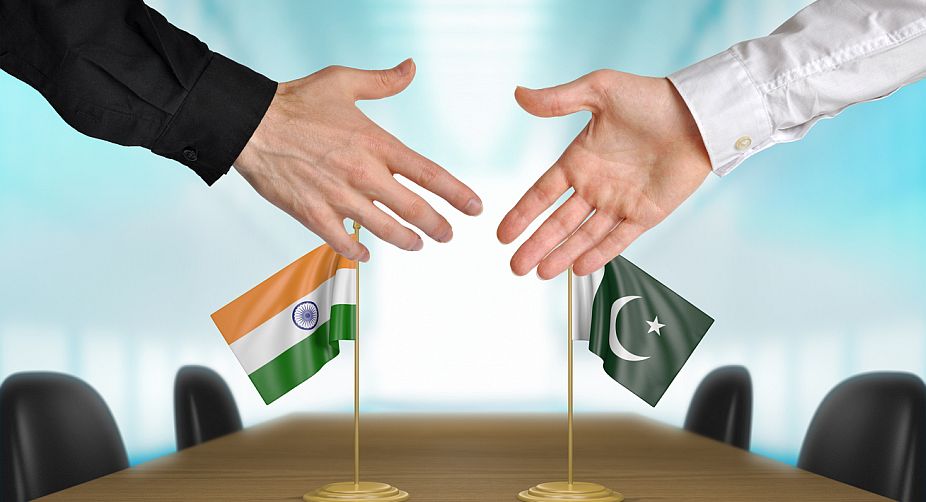Of all the events organised earlier this week to focus on peace and cooperation between India and Pakistan, perhaps the most moving was an exhibition of letters exchanged between school students of the two countries; all of them offered glimpses of the artless, untutored and selfless love that binds one human being to another as nothing else can.
The event was organised by a little known initiative, Aaghaz-i-Dosti (beginning of friendship), launched by two outfits, Hum Sub Aik Hein of Pakistan and Mission Bhartiam of India. They have been organising exchanges of greetings and solidarity messages between Indian and Pakistani schoolchildren for several years.
Advertisement
They also facilitate conversations between these students on special occasions, such as the independence days of Pakistan and India. This year, a dialogue via video link was arranged in addition to greeting Indian friends from the banks of the Ravi where lamps for peace were lit.
Aaghaz-i-Dosti has also been publishing a calendar for five years to promote friendship between Pakistan and India. Each calendar has carried paintings by school students on peace and friendship between the subcontinental neighbours.
The calendar for this year, for instance, carries six paintings by Pakistani students from schools in Swabi, Gojra, Lahore and Karachi. The six paintings by the Indian students are from schools in Kolkata, Dehradun, Surat, Delhi, Vadodara, and Salalah (Oman).
This year the contents of letters exchanged between the two sides went beyond expressions of friendship and solidarity. Last year, a schoolchild, Sharoon Patras, was killed in the Easter Day blast in a Lahore park. He was studying at a school in the city’s Youhanabad locality.
A report of this incident made a strong impact on the minds of students at one of Mumbai’s prestigious schools and they wrote letters of sympathy to students at the Youhanabad school. The exchanges resulted in the arrival of 23 letters from the Mumbai school that were displayed during the exhibition. Possibly the most touching of these letters is the one from a 13-year-old.
He said he used to consider a child fortunate if he had modern toys and facilities for recreation and entertainment. But after the loss of life in the Lahore blast he thought a child is fortunate if he goes to school in the morning and is back home safe and sound by the evening.
When the writers of these letters were shown by their class teachers photographs of the great gurdwara in Nankana Sahib, they were thrilled at discovering a bond of friendship with the people of Pakistan.
A 13-year old girl, incidentally the daughter of actors Kajol and Ajay Devgan, wrote that when the class teacher “showed us an image of a temple swarmed by devotees, each one of us guessed that it had to be somewhere in India, the Golden Temple or the Tirupati temple or even the Siddhivinayak temple but when Ms T told us about how this image was, in fact, taken in Pakistan … then it hit us. We share much more than average neighbouring countries do, we share cultures, languages, festivals, but most of all we share history.”
She was quite angry that “we are throwing all that away for a petty irrational argument” and “all we need to do is unite and fight against the really big challenges in the world, together”. Another girl was so moved at seeing the gurdwara picture that she called for an alliance of the two countries’ youth: “I think it is great that we are getting to make friends in another country as it is only a border that divides us. We are all the youth, the power of the future and if we try our best to change everyone’s mindset towards such issues then I am sure we will succeed. We both face caste discrimination in different ways, our countries are plagued with poverty and there is so much of inequality and sexism. These are just some of the things that our countries have in common and shouldn’t this make us friends and not foes?”
Fortunately, these children have not lost their innocence and have not been diverted from pleasurable pursuits. Says one of them: “I turned 13 a few months ago and have a passion for dance, drama, music, art, football, among some other pastimes that I enjoy. My grandparents actually came from Sindh … I definitely believe in reaching a resolution [of differences] through the means of peace, and I am glad that the cards from you all convey an idea no different … I think both of us feel that war is not the answer.”
These letters confirm what many persons of goodwill have always maintained, that children in India and Pakistan are by and large still free from hatred for each other and retain their ability to perceive in peaceful cooperation a better future for the subcontinent’s teeming millions.
How long can they escape contamination of the poisonous waves of hate and intolerance sweeping across the subcontinent? Not for long, it seems, and that should make sensitising children to the value of peace and amity a top priority in both countries.
The young volunteers responsible for organising Aaghaz-i-Dosti are not the first to discover the children’s and youth’s potential for persuading the people of the subcontinent to abandon the mutually suicidal path of conflict and confrontation; exchanges between schools of the two countries, especially in the area of sports, had begun yielding impressive results until petty-mindedness on both sides made travel between India and Pakistan extraordinarily difficult.
Possibly both governments are afraid of people-to people contacts, especially between the youth and children. But these barriers can be retained only at the unbearable cost of total disaster. Let more children from India and Pakistan talk peace to one another.
(Dawn/ANN)











